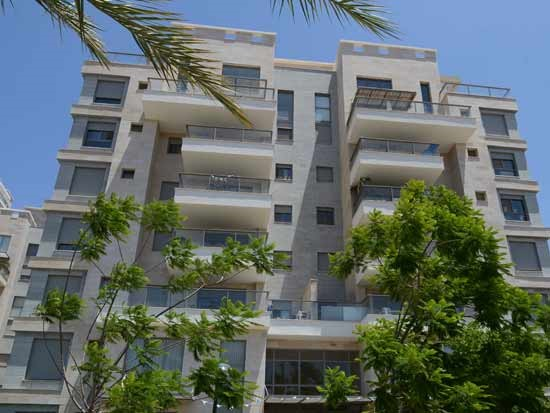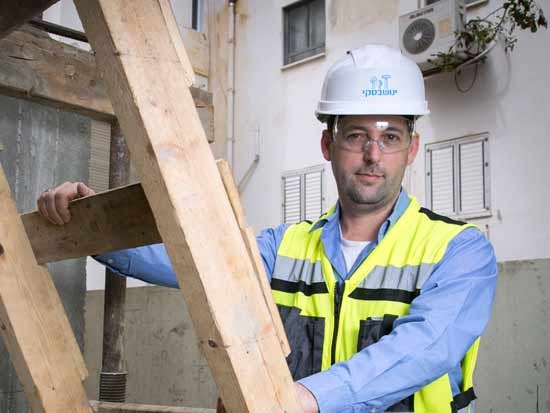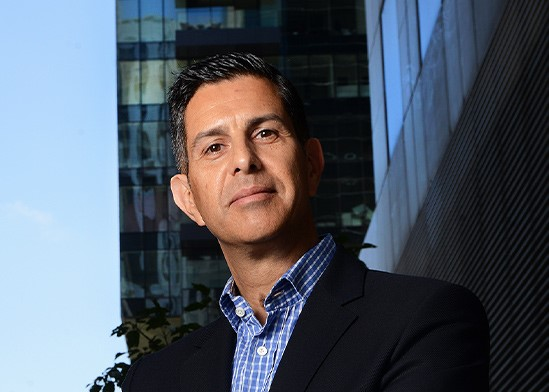Helit Yanai-Luizon, globes.co.il
Planning Director General Dalit Silber recently stated that she will work to make the green building standard more mandatory this year. This was not Silber's first announcement this year of a dramatic change: In recent months, she has already stated that she will work to finalize TAMA 38 in its current format (meanwhile agreed) That the TAMA will end in 2022), update the national outline plan (TAMA 35) so that building density in the country increases, and eliminate the possibility of submitting applications - all of which are statements in the market.
In fact, the announcement of the intention to make the green building standard a binding standard has passed relatively quietly, and in the market, it seems happy, although some are specific about the application. "Globes" answers the questions posed by Silver's message.
What is the Green Building Standard?
The standard allows for accumulation of points on various topics (e.g. energy and water savings, proper use of land, transport, waste savings, use of recycled materials) for certification by the Standards Institute. Since the standard came into being almost 15 years ago, only about 1,000 residential, office and public buildings have been built in the entire country. A building can receive a rating from one star (most basic) to five stars (excellent rating).
Will applying the green standard raise house prices?
The rule of thumb in the industry states that the cost of green building for a single one-level housing unit - the lowest level - is only NIS 5,000.The Ministry of Environmental Protection says that from the tests they carried out, it shows that the additional investment cost required in a green building returns in just 3.5 years and is worth detailing and the economy.
Nir Januszewski, vice president and chairman of the Contract Construction Division of the Israel Builders' Association, says the cost of green building is already declining. He said, "Green construction is more expensive only when the market is small and there are not many suppliers and planners who find it. Once they apply it to everyone - prices will drop.
"In addition, even if the execution costs go up, it lowers the maintenance costs, and people know that it pays off. Not just companies that stay in the building, invest in green construction - because they pay the electricity bill themselves."
 Green building in Hadera / Photo: Eyal Yitzhar
Green building in Hadera / Photo: Eyal Yitzhar
But the general public is not buying it yet. It's a small savings that spreads out over a long period of time, with people scratching it easy to buy an apartment.
"The crowd is already there when it comes to buying a car or a phone - people know it's worth investing more so that the car doesn't look like a garage. Residential construction is not yet so. We need to explain to consumers the benefits. The country will have to make an effort and invest in publicity."
Adv. Eitan Atia, CEO of the 15 independent cities that have already adopted the standard years ago, believes that green building is no longer rising today. "When you talk to entrepreneurs and contractors who have been building according to the green standard for a few years, they will tell you that there is no difference in the cost of construction, and some will say that it is even cheaper. For example, because you have to do a double wall or double siding, you can in some cases move all the plumbing between the walls. Instead of carving, it saves working time on the Finnish construction.
"Another point is that the real price of the apartment to the general public is not the purchase price, but the monthly repayment of its mortgage. When I come to buy an apartment for NIS 2 million, I look at how much I pay her mortgage a month. Suppose I have to pay NIS 5,000 a month for her mortgage, and for a more expensive apartment. I paid a little more than NIS 10,000 for her mortgage. I take into account that I save NIS 300-400 a month on electricity and water, and also that the commission's fees will be lower because the building's infrastructure is more cost-effective. In my 25-year mortgage, I pay less than a normal apartment. " .
Avi Maor, CEO of MORE Group, which has built many green apartments, sees Matia completely differently about the costs. "If a family's two-month electricity bill in a regular apartment is NIS 800, then a green standard construction can lower the bill by NIS 75 a month, even NIS 100 per month. When you tell people that amount, it doesn't get them through - it's not worth them to invest in a more expensive apartment for that.
"By the way, in this respect, for the entrepreneurial companies if the green standard is approved and all the new apartments are like that, it will save the need for public education."
According to Maor, "The standard is important, but it is not everything. In addition to the energy savings, green building has other important elements. The savings that result from a family being able to do everything in the same place - living, working and leisure - are much greater. And time and money and affects the quality of life of the whole family. "
Will the construction permit procedure be lengthened?
Nir Januszewski says that the contractors' association was asked to partner in formulating the move to apply the green standard throughout the country. He said, "We had certain conditions that we asked for in this process - for example, there will be an organizing procedure for those who are already in the middle of planning.
"But the most important thing we asked for is that it does not complicate the bureaucracy. Over-issuing already allows no more grain of complexity, and issuing the green standard is quite complicated and creates delays. In our view, on a national scale, perhaps we need to move to self-control, more innovative, otherwise there will be an unbearable cork. "
 Nir Januszewski / Photo: Alon Ron
Nir Januszewski / Photo: Alon Ron
Avi Maor adds that "external companies need to be brought in to document the green building to get the standard, and it takes time and money."
Bottom line, both the market and the regulatory bodies will need to study the issue and create a situation that will no longer extend the permit phase.
The Ministry of the Environment also welcomes the initiative, but also emphasizes that this is only part of a range of quality planning solutions. Architect Ran Avraham, director of the Green Building Department at the Ministry of Environmental Protection, said that "the firm supports the approval of the standard as required by the planning and building regulations as undertaken by the CEO of the planning director."
Abraham mentioned that so far green construction has been the property of only the strongest cities, and that means nationwide adoption of the standard is a reinforcement of peripheral construction. “Today, most of the green construction is concentrated in the demand areas, and as in other areas it does not surf outside - where it is needed more. A national green building bill will bridge the widening gap between the quality of construction between the center and the periphery."
What is the feasibility of moving the move?
CEO of 15 Independent Cities Forum Ethan Atia says: "We welcome this intention, and I wish it will happen, but it depends a lot on who will be the next minister to be in charge of the Planning Administration and the National Council.
"The minister responsible for planning administration needs to be politically strong and can also influence other offices that are involved in such a process as the Ministry of Construction and the Interior Ministry. If that happens, such a decision can certainly pass quickly.
"But resistance can come from different directions. For example, in recent years a government team of government office executives has been set to lower planning and construction regulations to lower costs and lower house prices - they may try to save that, because it adds to the regulation."
what is the next step?
Director General of the Green Building Council Yael Begun-Chen says: "An installation that is being implemented throughout the country is critical and important, and it aligns with the minimum quality of construction throughout the country and not just in the 15th Forum cities. But installation is a starting point and is not a substitute for continuing to promote excellence in green building and ambition for two-three and even four-star buildings by standard. "
Nir Januszewski agrees. He said, "The goal is to rise to three or four stars. There must be an incentive for the state to rise above one star. The incentive can be in the form of building rights or in other ways.
What is your position on public buildings, especially educational buildings?
"We expect the state to lead that all the buildings it builds will be like that. I say everything has to go. Both a 200-meter and a 50-square-foot school building. As for kindergartens, which are small buildings, there were claims that it was uneconomical and unnecessary - but I, as a child's father, think it's important, our children spend a lot of time there. "
Ethan Atia adds, "The gap between the cost of building a regular school and building a green school is greater - at least five times greater than residential. Because there are many more safety-related requirements that are not fully aligned with the standard. "The Ministry of Education will pay those costs and there is no one to talk to - it has no budget. All international studies show that standard-built schools have less morbidity, tremendous electricity and water savings, but that does not convince them, and there is no budgetary regulation for that matter."
 Ethan Atia - CEO of the 15th Forum / Photo: Eyal Yitzhar
Ethan Atia - CEO of the 15th Forum / Photo: Eyal Yitzhar
Avi Maor, on the other hand, argues that "Energy saving is not the only thing. If we are planning mixed-use projects, then its green benefits are an inherent part of it. We as entrepreneurs, who choose our projects, make sure to choose lots that have mixed uses - at least street trading and residential Above, at least they don't have to move the car for pizza or a pharmacy or hairdresser.
"In the context of employment, you can choose neighborhoods where there are areas of employment that can allow people to work there as well. No project will be built in any seat in the south instead of forgotten, which is anti-green. The heat of the light rail.
"The standard has helped people who understand its meaning to design better apartments - more lit and more ventilated. Positive energy. By the way, this does not need a standard but architects who return to the basics of proper planning - the standard only helps."
Maor is very emphatic in his words. "In the long run it is impossible to manage as we have been today. The situation is only getting worse. So, to me, Dalit Silver's urban plans are more important. I follow new BPLs and there are very clear guidelines from the Planning Administration to assimilate the uses. For example, in Be'er Ya'akov, in the neighborhood that will be built instead of Zrifin, they took it to the extreme: the two lower floors are commercial, above it offices and above it residential. In my opinion, only Tel Aviv can contain it today. I wouldn't buy a lot like that even though we believe it, because outside of Tel Aviv there is marketing difficulty.
"In Tel Aviv you can also sell NIS 60,000 per square meter apartment without a window in the bathroom, but in Beer Yaakov no such apartment will be bought.
"In 25 years, we are going to build another country here - twice as much. People need to understand the meaning. What we have built in 70 years for girls we have to build again at 25. It is crazy - we have to streamline."



